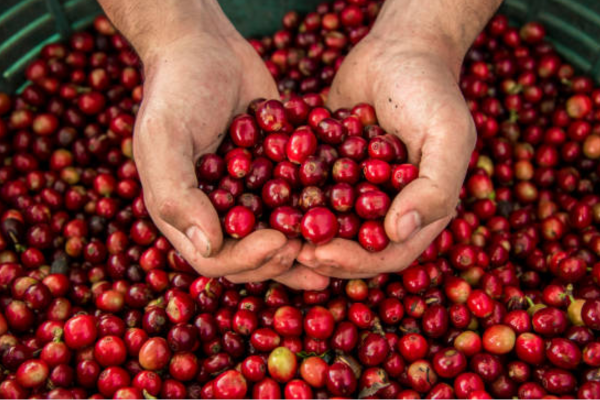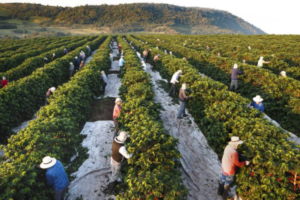Introduction:
Coffee is more than just a beverage; it’s a global phenomenon that transcends borders, cultures, and traditions. From the bustling streets of Ethiopia to the cozy cafes of Paris, the journey of coffee has woven itself into the fabric of societies worldwide. In this exploration, we embark on a cultural odyssey, delving into the rich tapestry of coffee traditions across the globe.
Origins:
From Ethiopian Highlands to Global Cultivation The story of coffee begins in the lush highlands of Ethiopia, where legend has it that a goat herder named Kaldi discovered the energizing effects of coffee beans after noticing his goats frolicking with newfound vigor upon consuming them. This serendipitous discovery marked the genesis of coffee cultivation.
From its humble beginnings in Ethiopia, coffee spread across the Arabian Peninsula, where it became an integral part of Islamic culture. By the 15th century, coffee houses, known as “qahveh khaneh,” proliferated throughout the Middle East, serving as vibrant hubs for intellectual discourse and socializing.
European Influence:
The Rise of Café Culture Coffee’s journey to Europe was catalyzed by the Ottoman Empire, where it gained popularity among the ruling elite. The first European coffeehouse opened its doors in Venice in 1645, sparking a cultural revolution that swept across the continent.
During the Age of Enlightenment, coffeehouses emerged as epicenters of intellectual exchange, attracting philosophers, writers, and artists. In cities like Paris, Vienna, and London, coffeehouses became synonymous with innovation and enlightenment, giving rise to the vibrant café culture that persists to this day.
Americas:
From Colonization to Specialty Coffee Movement The arrival of coffee in the Americas heralded a new chapter in its global journey. Introduced to the Caribbean by European colonizers, coffee plantations soon proliferated across the region, fueled by slave labor.
In the 19th century, coffee cultivation expanded into Central and South America, transforming countries like Brazil, Colombia, and Guatemala into major coffee producers. The emergence of the specialty coffee movement in the late 20th century brought a newfound emphasis on quality, sustainability, and fair trade practices, reshaping the global coffee industry.
Asian Influence:
From Traditional Brews to Modern Innovations In Asia, coffee has a long history intertwined with traditional tea culture. While tea remains the dominant beverage in many Asian countries, coffee’s popularity has surged in recent decades, driven by urbanization and globalization.
Countries like Japan and South Korea have embraced coffee with fervor, pioneering innovative brewing techniques and fostering a thriving café scene. In Southeast Asia, traditional coffee preparations like Vietnamese egg coffee and Thai iced coffee offer unique and flavorful experiences that reflect the region’s culinary diversity.
Latin American Influence: From Rainforests to Coffee Capitals
In Latin America:
Coffee has left an indelible mark on the region’s landscape, economy, and culture. The lush rainforests of countries like Brazil, Colombia, and Costa Rica provide the perfect environment for cultivating high-quality Arabica beans, coveted by coffee connoisseurs worldwide.
Brazil:
As the world’s largest coffee producer, plays a central role in shaping global coffee trends. From the sprawling plantations of Minas Gerais to the vibrant streets of São Paulo, coffee permeates every aspect of Brazilian life. The country’s rich coffee heritage is celebrated annually during the International Coffee Week in Belo Horizonte, where industry professionals and enthusiasts gather to explore the latest trends and innovations in coffee production and consumption.
Colombia:
Renowned for its smooth and balanced coffee, boasts a diverse range of microclimates ideal for coffee cultivation. The Colombian Coffee Cultural Landscape, a UNESCO World Heritage site, offers a glimpse into the country’s coffee heritage, with traditional fincas (farms) nestled amidst picturesque mountains and valleys. The Juan Valdez cafes, named after the iconic Colombian coffee farmer, serve as ambassadors of Colombian coffee culture, promoting sustainability and fair trade practices.
In Costa Rica:
Coffee production is deeply intertwined with the country’s commitment to environmental conservation. Sustainable farming practices, such as shade-grown cultivation and agroforestry, are employed to preserve the biodiversity of Costa Rica’s rainforests while producing exceptional coffee. Visitors to Costa Rica can embark on coffee tours that provide insight into the coffee production process, from seed to cup, while immersing themselves in the country’s natural beauty.
Globalization and Innovation: Coffee in the Digital Age
In the digital age, coffee culture has undergone a transformation fueled by globalization and technological advancements. Social media platforms like Instagram have elevated coffee to the status of a lifestyle accessory, with latte art and café aesthetics becoming Instagram-worthy trends.
The rise of third-wave coffee shops, characterized by their focus on quality, craftsmanship, and sustainability, has reshaped the coffee landscape in cities around the world. These artisanal cafes source beans directly from small-scale farmers, roast them in-house, and brew them using precision techniques, elevating coffee to an art form.
Innovations in coffee brewing technology have also democratized the coffee experience, allowing enthusiasts to replicate the precision and consistency of professional baristas at home. From espresso machines equipped with PID controllers to manual pour-over devices like the Chemex and AeroPress, coffee lovers have access to a plethora of tools to experiment with brewing methods and flavor profiles.
Cultural Rituals:
From Coffee Ceremonies to Social Rituals Across cultures, coffee is more than just a drink; it’s a ritual imbued with meaning and symbolism. From the elaborate coffee ceremonies of Ethiopia, where beans are roasted, ground, and brewed with meticulous care, to the leisurely “café au lait” enjoyed on a Parisian terrace, each cup of coffee tells a story of tradition, community, and connection.
In many societies, coffee plays a central role in social interactions, serving as a catalyst for conversation and camaraderie. Whether sipping espresso at an Italian espresso bar or sharing a pot of Turkish coffee with friends, the act of sharing coffee transcends linguistic and cultural barriers, forging bonds that unite us across continents.
Conclusion:
Coffee’s journey from the Ethiopian highlands to the bustling streets of global metropolises is a testament to its enduring allure and cultural significance. As we traverse the diverse landscapes of coffee culture, we discover not only the nuances of brewing methods and flavor profiles but also the universal themes of community, tradition, and shared experience that unite coffee lovers around the world. In each cup of coffee, we find a taste of history, a glimpse of culture, and a reflection of the human spirit’s boundless creativity and ingenuity. So, let us raise our mugs in celebration of coffee’s cultural odyssey—a journey that continues to inspire, connect, and delight us all. Cheers to coffee, the world’s favorite brew.
In a world filled with turmoil and uncertainty, coffee remains a constant source of comfort, inspiration, and connection—a reminder that amidst the chaos, there is always time for a shared cup of warmth and camaraderie. So let us raise our mugs once more, to coffee—the humble bean that unites us all in a journey of discovery, appreciation, and celebration. Cheers to coffee, and to the endless possibilities it brings to our lives.



